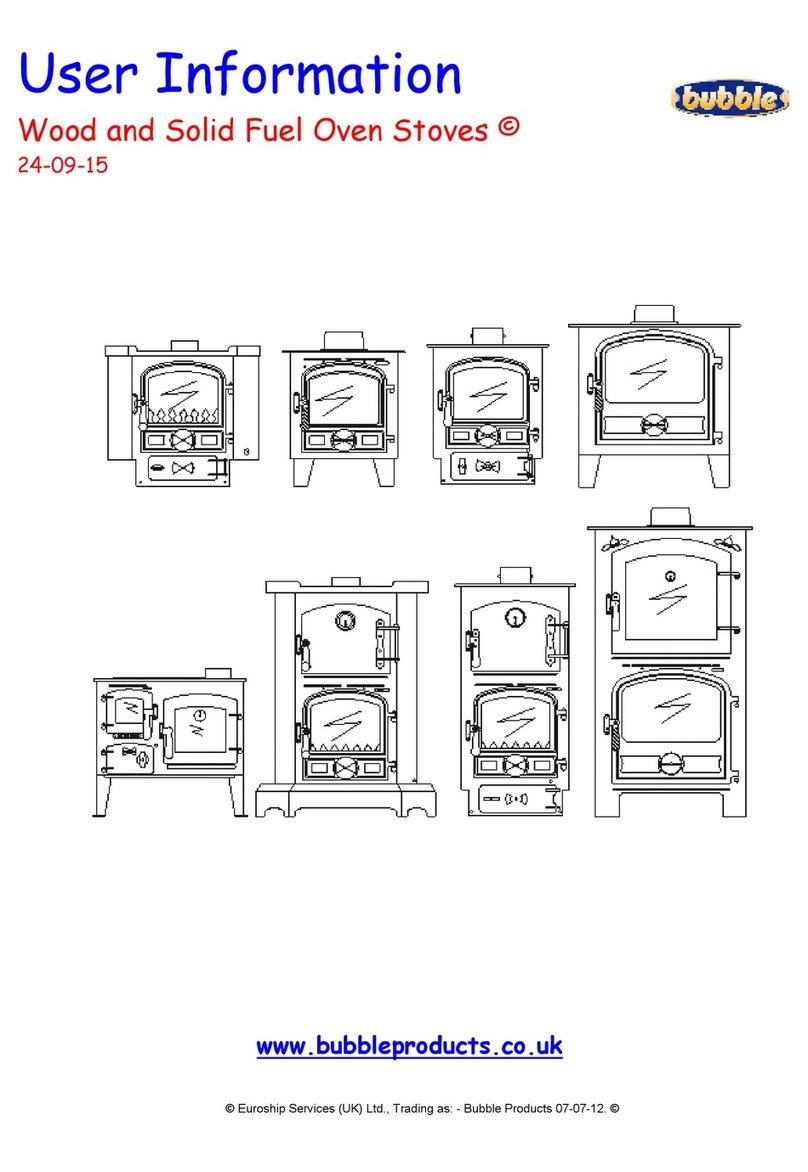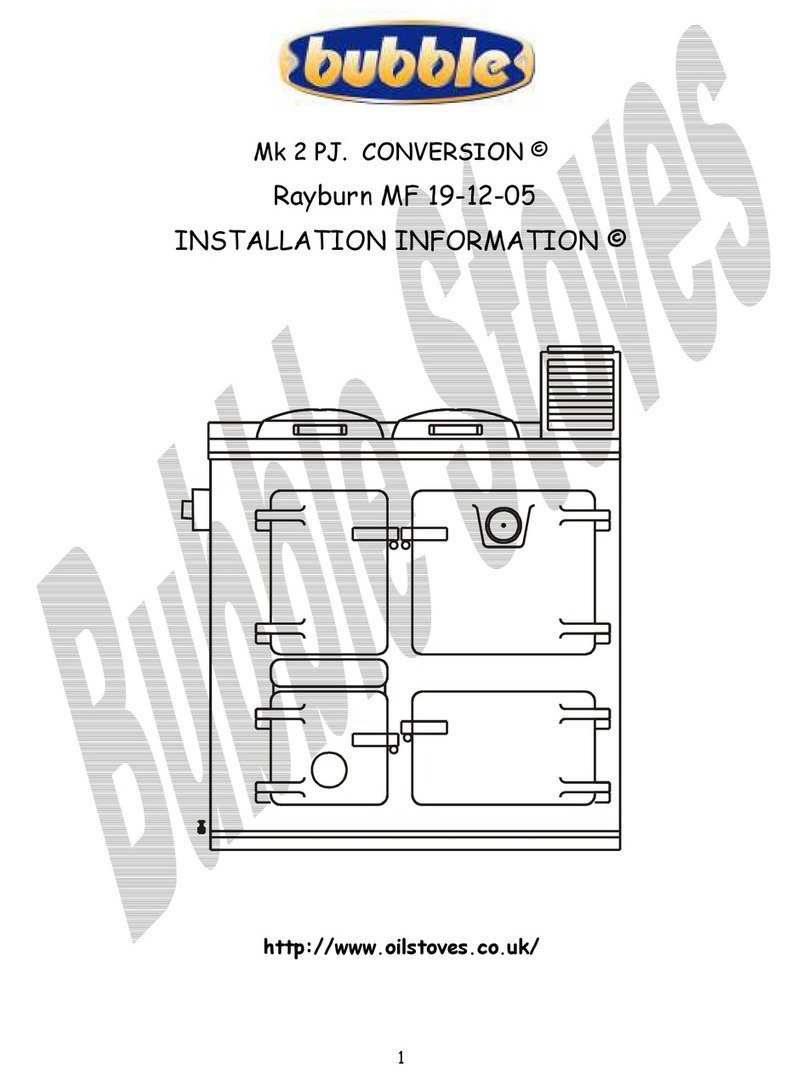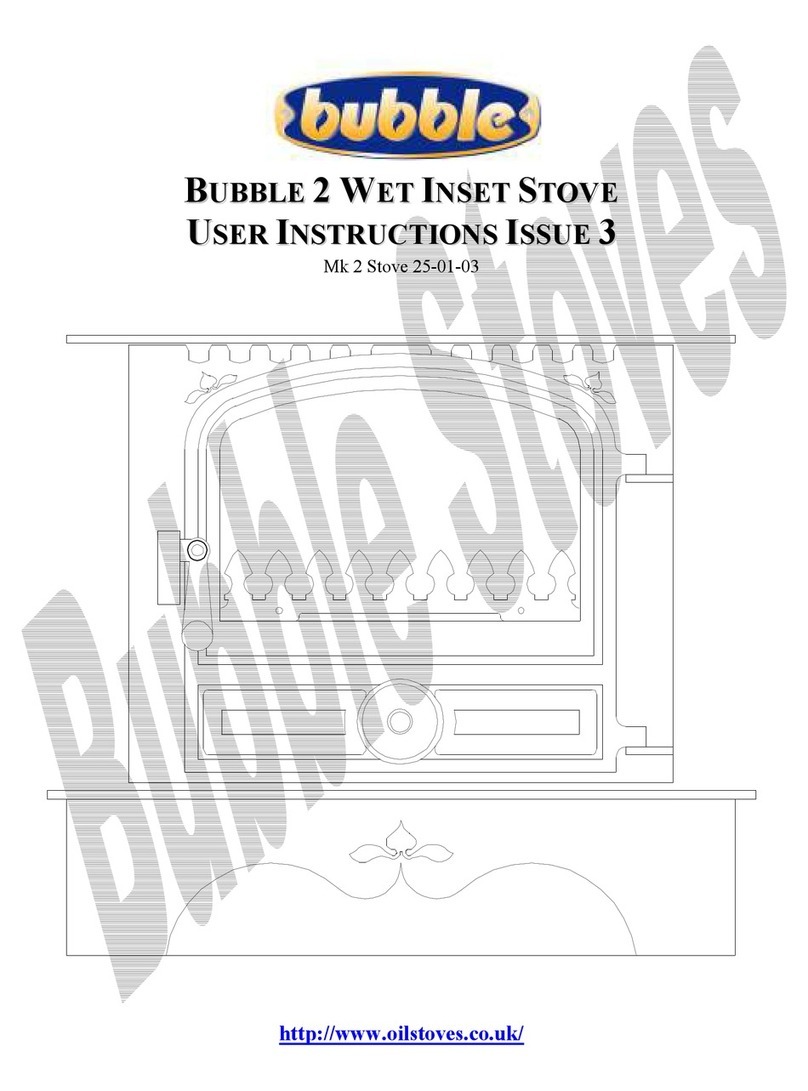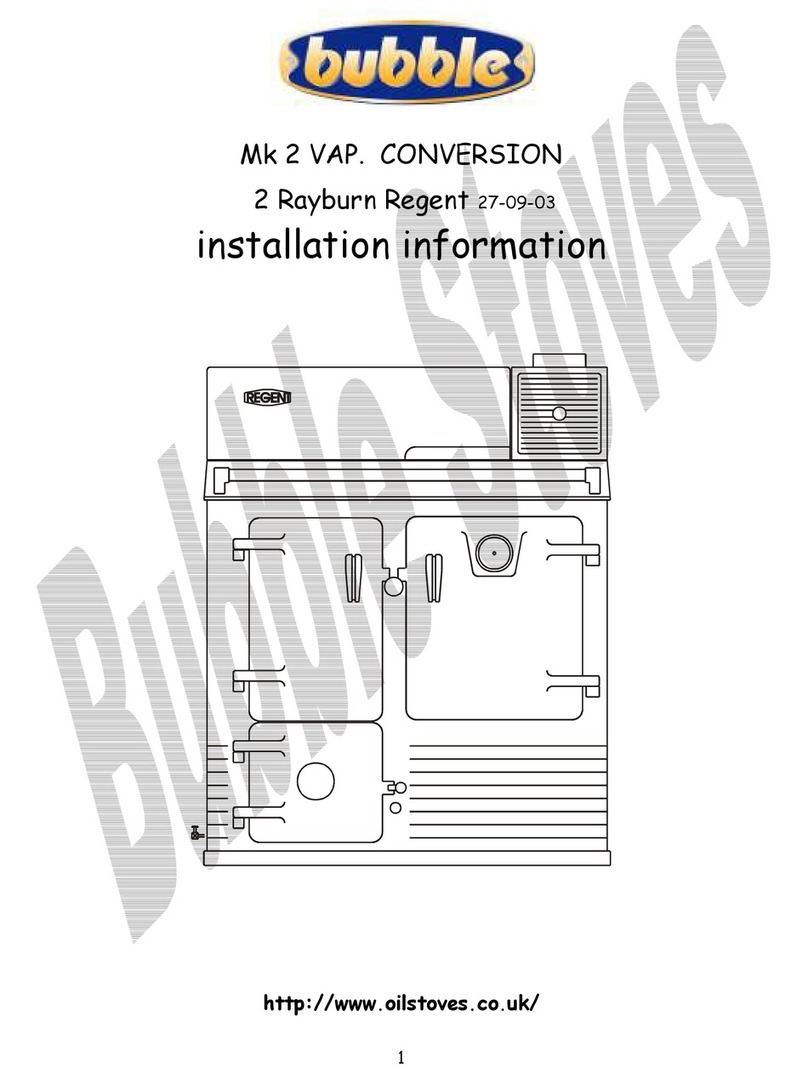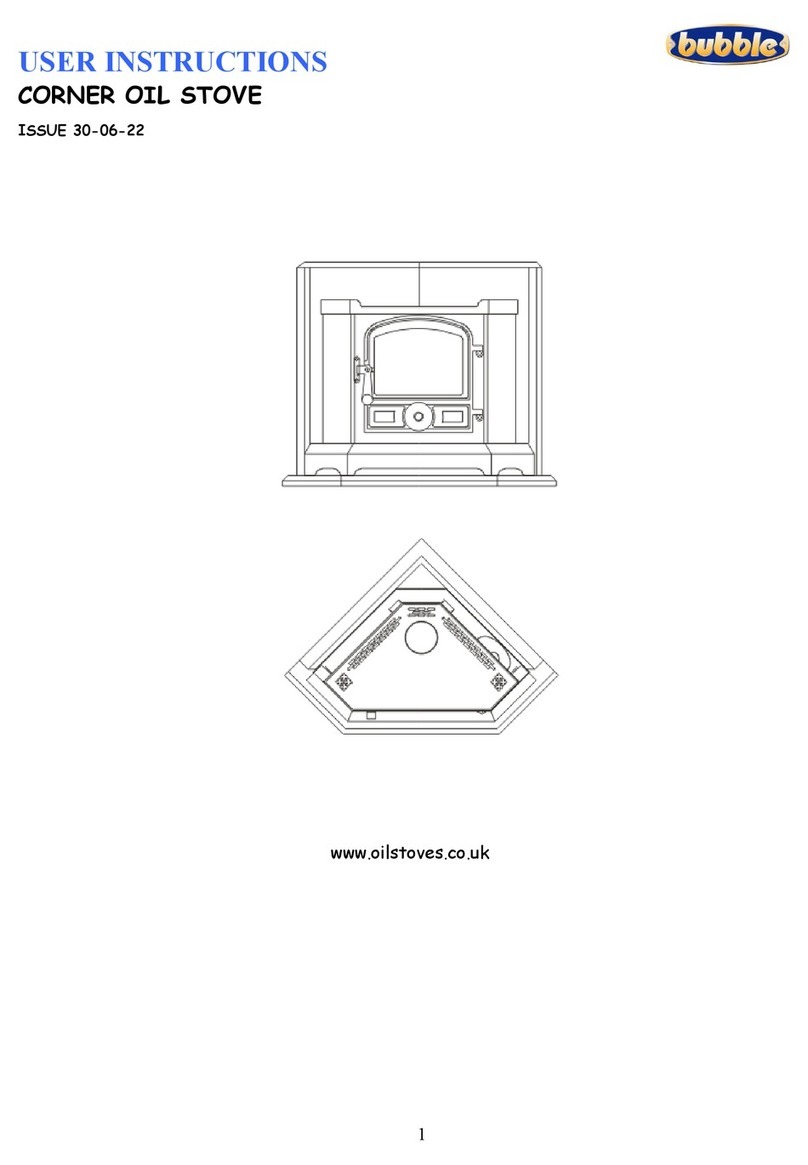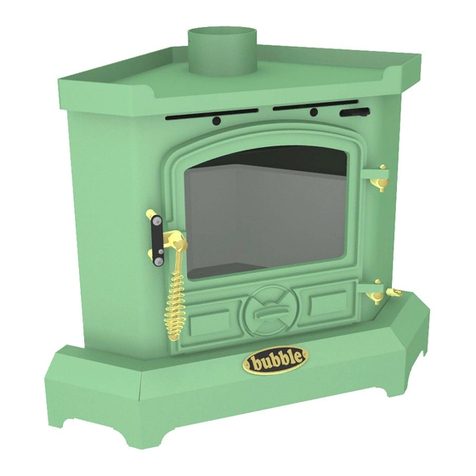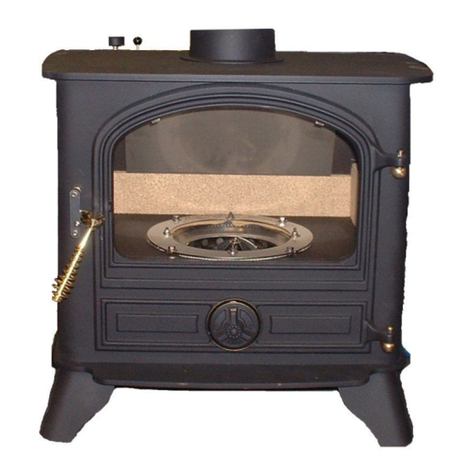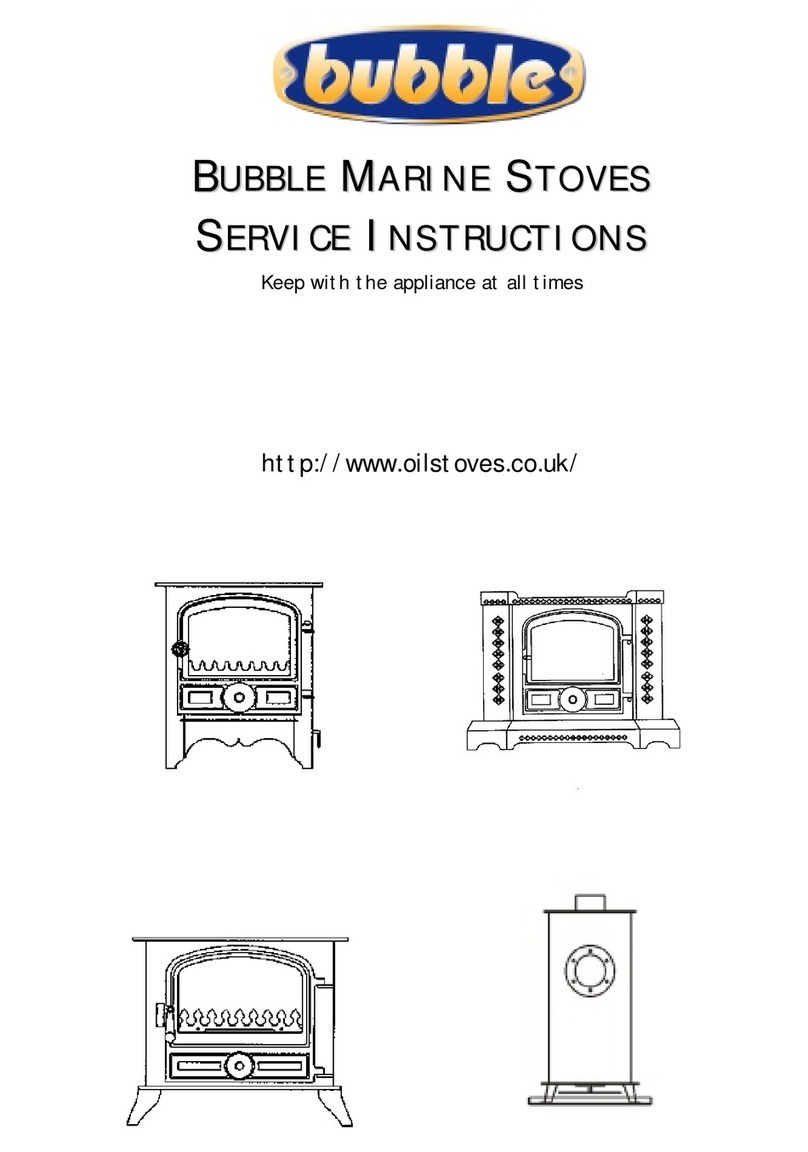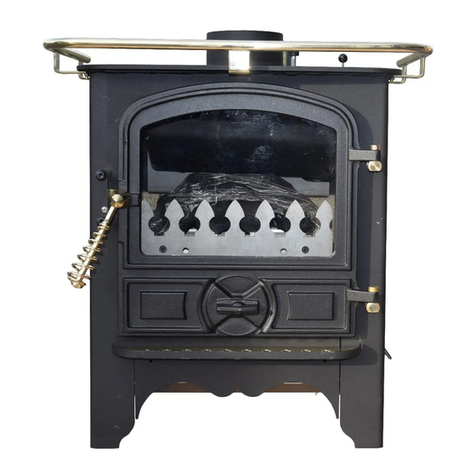The chimney system must be designed so as to be
easily extendible.
The chimney can have a minimum inside diameter of
0mm.
Outside the boat, the chimney should be twin wall and
insulated to keep the flue gasses as hot as possible.
The chimney and stove must be adequately guarded to
prevent the risk of injury through burning.
When moored extend the chimney if you want the
appliance to be run at its maximum output, if you are
happy with the output of the stove running at up to
setting 3, then it will not be necessary to add the
chimney extension.
The chimney terminal must be fitted with a terminal
that will resist down drafting in all terminal conditions.
C
HIMNEY
H
EIGHT
S.
MINIMUM HEIGHT FOR HIGH FIRE RUNNING IS
2.2 METRES (long extension)
When cruising reduce the chimney height and turn the
stove down to match the reduced chimney height.
Do not cruise with the stove turned up on full output.
M
INIMUM
H
EIGHT
F
OR
L
OW
F
IRE
R
UNNING
MINIMUM HEIGHT FOR LOW FIRE RUNNING IS
1.8 METERS. (Short extension)
When mooring pay particular attention to the
surroundings and remember that close objects such as
high buildings, trees or adjacent walls may well cause
down or up draughting.
Typical flue set ups can be seen in the illustrations
showing the flue pipe fitting into a standard cast iron
deck flange topped of with a traditional twin wall
chimney, terminating with a rotating cowl.
FUEL
SUPPLY
PROBLEMS
There are several problems relating to fuel supply of
which you need be informed.
WAXING - TRIM – ROLL
W
AXING
Diesel has a nasty habit of waxing up when the
temperature gets down to or lower than freezing,
This waxing or thickening alters its flow
characteristics and consequently what was an
adequate fuel feed supply can rapidly turn into an
inadequate one when the temperature starts to fall.
The worst scenario is fuel feed pipe 50-60 feet long in
8mm dia. pipe.
The best-case scenario is a fuel pipe 4 feet long in
15mm dia with good insulated lagging.
C
HANGING
O
IL
P
RESSURE
A
T
T
HE
S
TOVE
.
Because of the layout of a boat it is not possible to
provide a high pressure oil supply, in most cases a
pressure head of out 18" is all that is available and as
the tank empties this head of pressure will reduce,
and may alter the flow characteristics of the fuel.
In some cases this head can also be affected by the
ballast or trim of the boat, the changing level of the
boat due to addition removal of ballast, fuel or water
can have an effect on the position of the oil tank in
relation to the stove and the angle at which the oil line
is established.
Take great care to monitor all the effects of the
different ballast and trim possibilities.
Make sure that adequate oil feed is always available at
the outlet end of the fuel pipe before it enters the oil
control valve at the stove.
P
OOR OIL FLOW PROBLEMS
.
Bubble stoves have a very accurate oil flow control
valve, which is set up to give a precise oil flow at high
and low fire.
For example the stove is flow rated at 4cc per minute
on low fire and 10cc per minute on high fire.
The test flow through the supply pipe should be well in
excess of the maximum flow rate of 10ccs even when
the temperature is below freezing and the boat is
adversely trimmed.
O
IL FEED SET UP
.
If the stove is fitted forward at the bow end of the
boat, to keep the oil feed supply as short as possible; a
forward mounted oil tank is recommended.
The tank should have insulating material around it for
protection from the effects of cold weather.
Always add a suitable proprietary antifreeze additive
to the stove fuel for wintertime running, your fuel
supplier should be able to advise you about fuel
additives.
The tank should have conveniently sized filler and it
must be vented.
The tank should have:
